Have you seen a motor? Surely, we all have seen and used motors, from the mobile phone in our pocket to huge industries. We use motors at home and in industries.
Motors power many household appliances such as mixers, juicers, refrigerators, water pumps, fans, vacuum cleaners, and washing machines. They also drive components like computer hard disks, CD/DVD players, and the vibration mode in cell phones. In industries, motors perform various operations efficiently. Let’s explore the different types of motors, understand their working principles, and discover their applications.
What is an Electric Motor?
An electric motor is a machine that uses electrical energy and converts it to mechanical energy, in the form of rotation. In this article, we see how a DC (Direct Current) motor works.
The Principle Behind the Working of Electric Motor
When an electric current passes through a conductor, it generates a magnetic field around it. This magnetic field exerts a force on any nearby magnet, causing it to move. Hans Christian Oersted first observed this phenomenon in 1820.
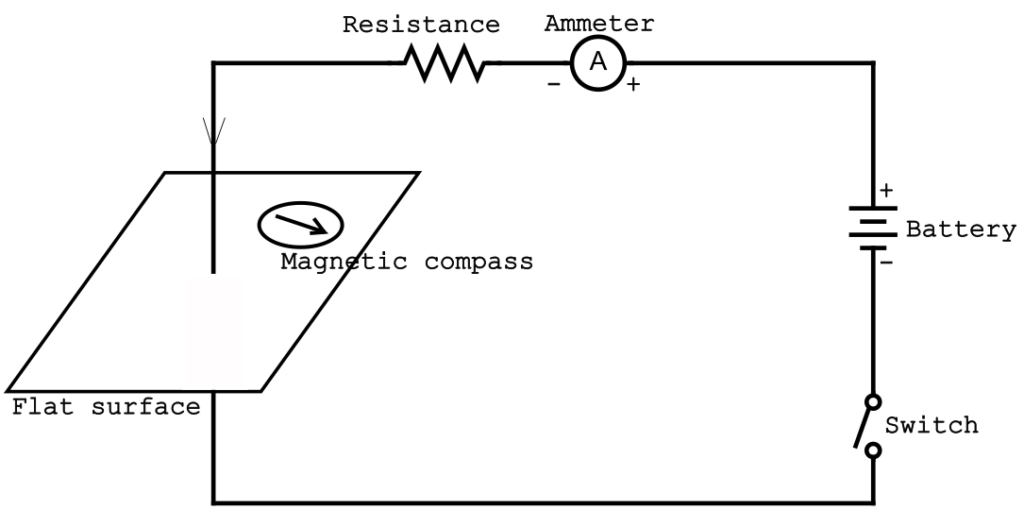
In this figure, a circuit is set up with a battery, ammeter, resistor, and switch. A long, straight conductor passes perpendicularly through a flat surface, such as cardboard. A magnetic compass is placed on the surface. When the switch is closed, current flows through the circuit, causing the compass needle to deflect. This demonstrates that the electric current generates a magnetic field, which exerts a force on the magnetic needle.
Ampere's Discovery
French scientist André-Marie Ampère proposed that the reverse could also be true: a conductor carrying current should experience a force when placed inside a magnetic field. He conducted experiments and demonstrated that a current-carrying conductor indeed moves when subjected to a magnetic field.
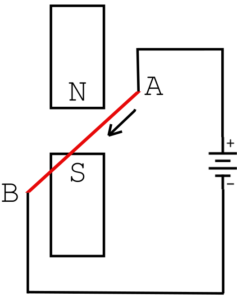
This figure shows a simplified setup of Ampère’s experiment. The conductor AB, marked in red, is a straight rod suspended freely between the two poles of a magnet. When current flows through the conductor, it moves left or right depending on the direction of the current.
This phenomenon is known as the magnetic effect of electric current. The mutual interaction between electric current and magnetic fields forms the working principle behind motors, generators, microphones, loudspeakers, magnetic tapes, computer hard disks, and various measuring instruments.
It has been proven that the force experienced by a conductor is maximum when the directions of the current and the magnetic field are at right angles to each other. In this case, the conductor moves in a direction perpendicular to both the current and the magnetic field.
Fleming's Left Hand Rule
As mentioned earlier, the directions of the current, magnetic field, and the movement of the conductor are perpendicular to each other, similar to the edges of a cube. The direction of the conductor’s movement, caused by the flow of current through it in a magnetic field, can be determined using Fleming’s left-hand rule.
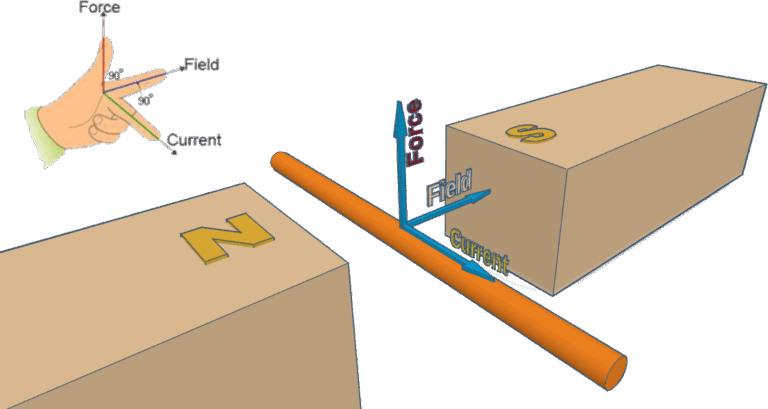
Hold the left hand such that the thumb, forefinger, and middle finger are at right angles to each other.
- The forefinger represents the direction of the magnetic field from north to south.
- The middle finger points in the direction of the current.
- The thumb represents the direction of movement of the conductor due to the force.
Working of the Electric Motor
To understand how a DC motor works, let us first study a simple motor with a single coil.

This motor features a single rectangular coil placed between the poles of a magnet, with the coil’s sides perpendicular to the magnetic field lines. The coil’s ends are connected to two semi-circular split rings (R1 and R2 in the figure), which are pressed against brushes (T in the figure) made of graphite or copper. These brushes, held tightly against the rings by springs, allow direct current to flow into the motor.
Initially, assume that side AB is near the north pole, while side CD is near the south pole.
a. When the switch is turned on, current flows from the positive terminal of the battery to the coil through the left brush and split ring R1. It then returns to the negative terminal through R2 and the right brush.
b. Current flows from A to B and from C to D, causing the conductor to experience a force that makes it move. According to Fleming’s left-hand rule, the direction of movement for side AB is downward.
c. Similarly, for side CD, the direction of movement is upward. Since the sides of the coil move in opposite directions, the entire coil rotates in an anti-clockwise direction.

d. After half a rotation, side CD is near the north pole, and side AB is near the south pole. The split rings also rotate with the coil, ensuring that the direction of current inside the coil remains unchanged. As a result, current now flows from D to C and from B to A.
e. The direction of force on both sides remains the same, so the coil continues rotating in the anti-clockwise direction. With each half turn, the current inside the coil reverses, ensuring the coil keeps rotating in a single direction. This cycle continues, causing the coil to rotate continuously.
Parts of an Electric Motor
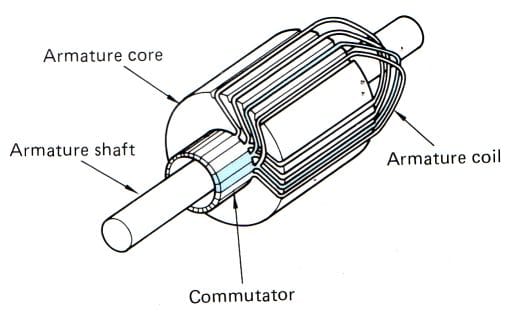
A regular motor consists of multiple coils, known as the armature, which are wound over a core made of magnetic material. Each coil’s ends are connected to split rings. The set of these split rings is referred to as the commutator.
Motors can be categorized into DC motors and AC motors based on the type of power supply. The two main components of a motor are the rotor (the rotating part, which in some figures is the coil) and the stator (the stationary part, which is often represented by magnetic poles). In large motors, electromagnets are used instead of permanent magnets, and there are typically more than two poles.
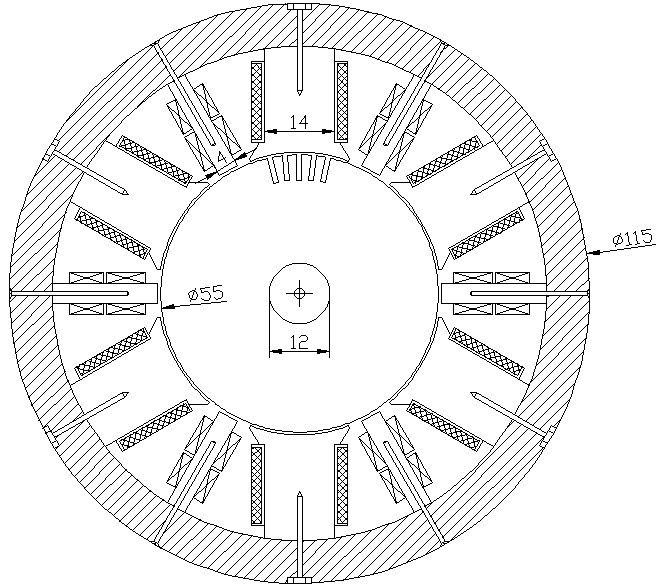
This article discusses a DC motor, featuring six main poles (represented by wide rectangles) and interpoles (thin poles) between them. Both sets are attached to a yoke. The armature, located below the poles, contains slots for the conductors. The commutator sits on the shaft, shown by a smaller circle. All poles are electromagnets, magnetized by coils around them. The motor’s current source powers both the poles and armature conductors.
Types of DC Motors and their Applications
DC motors, though less common than AC motors, are still widely used in various applications. These include electric vehicles, robotics, and precise control systems due to their ability to provide consistent speed and torque. Different types of DC motors serve specific needs based on factors like speed, torque, and size.
Permanent magnet motors
These are small motors of low capacity. They are used in toys, computer drives, cell phone vibrators, portable drills, car wipers, etc.
Series motors
The magnetic field winding and the armature winding are in series. Series motors are used in lifts, cranes, hoists, and other heavy lifting applications.
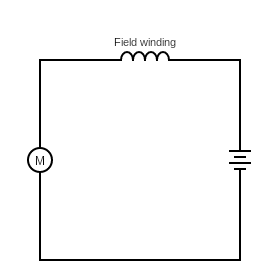
Shunt motors
In shunt motors, the field winding is in parallel with the armature winding. These motors are used in applications that need constant speed, and good speed control. Machines such as lathes, drilling machines, and fans use shunt motors.
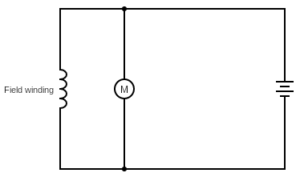
Compound motors
They are a combination of series and shunt motors. Based on the type of connection, they are classified as short shunt and long shunt compound motors.
Compound motors are used in conveyors, rolling mills, and elevators.

This is a simple article about DC motors. AC motors are more extensively used because of their various advantages compared to DC motors. We will talk about AC motors in another article.


Woow, wanted this article. Thank a ton, dude
Thanks for your personal marvelous posting! I quite enjoyed reading it, you are a great author. I will make sure to bookmark your blog and will eventually come back in the future. I want to encourage you continue your great posts, have a nice morning!
Pingback: Sal